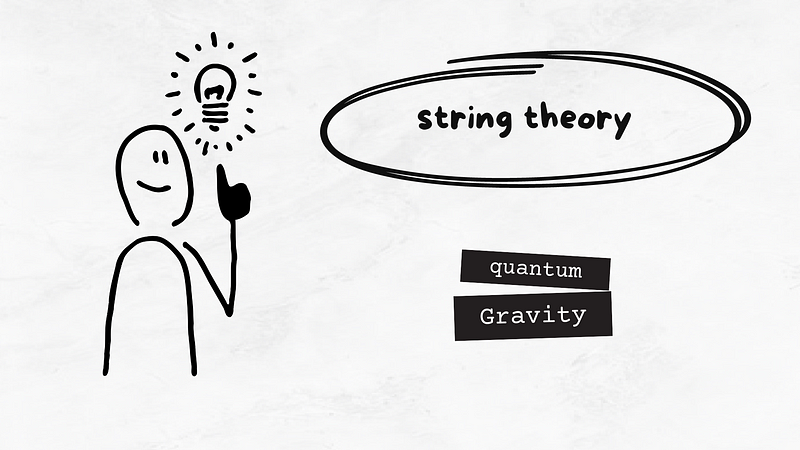Understanding String Theory: A Simple Guide for Kids
Written on
Chapter 1: The Basics of Quantum Theory
How can we simplify complex concepts for a young audience? Let’s dive into the fascinating world of quantum theory.
In quantum theory, scientists have discovered that the behavior of atoms and particles can be quite surprising. They don't always act like solid objects; sometimes, they resemble waves. Think of it like water, which can exist as both a flowing liquid and a solid ice block. Scientists rely on quantum mechanics to understand these behaviors, which ultimately aids in developing technologies like smartphones and computers.

Chapter 2: The Concept of Relativity
What about relativity? Gravity is the force that pulls us towards the ground and prevents us from floating off into space when we leap. Einstein's general theory of relativity explains how gravity works by illustrating how objects warp the space surrounding them.
Picture space as a massive trampoline. When you place a heavy ball in the center, it stretches downwards. If you roll a lighter ball towards it, the lighter ball will roll toward the heavier one, mirroring how objects fall to Earth due to gravity's pull. This bending of space is fundamental to understanding why objects fall and how the Earth orbits the Sun.

Chapter 3: Comparing Quantum Mechanics and Relativity
So, how do these two theories differ? Quantum mechanics deals with the very small — atoms and particles — while general relativity explains phenomena on a much larger scale, like stars and planets.
Additionally, quantum mechanics suggests that the behavior of tiny particles is unpredictable, whereas general relativity operates under the assumption that large objects follow predictable laws.
Chapter 4: The Puzzle of Quantum Gravity
The quest for a unified theory, known as quantum gravity, aims to merge these two distinct frameworks. It's akin to piecing together two different puzzles, and scientists are diligently attempting to find the right fit.
A significant hurdle arises from the fact that the principles of quantum mechanics and general relativity often conflict. For instance, applying quantum mechanics to gravitational behavior leads to complications.

Chapter 5: Exploring Potential Solutions
One avenue scientists are exploring involves proposing additional dimensions beyond our familiar four dimensions of space and time. This is where string theory enters the discussion.
Chapter 6: An Introduction to String Theory
Imagine that everything in the universe is composed of incredibly tiny strings, so minuscule that they're invisible to our eyes. These strings form the very fabric of everything around us — from people and trees to cars and even the air we breathe. Depending on how these strings vibrate, they can create different entities; a particular vibration might yield a human, while another could create a tree.
Superstring theory is an advanced version of string theory that provides deeper insights into how everything operates. We will explore more about this and related concepts in the next segment!

Thank you for reading! If you enjoyed this article, please click the clap icon. For those interested in supporting my work, consider becoming a Medium member or buying me a coffee. Stay tuned for more engaging stories!
This first video, titled "String Theory for Kids," offers a fun introduction to the topic, helping young minds grasp the fundamentals of string theory.
The second video, "A Theoretical Physicist Tries To Teach Kids String Theory Using Music," creatively combines music and science to explain complex concepts in an engaging manner.